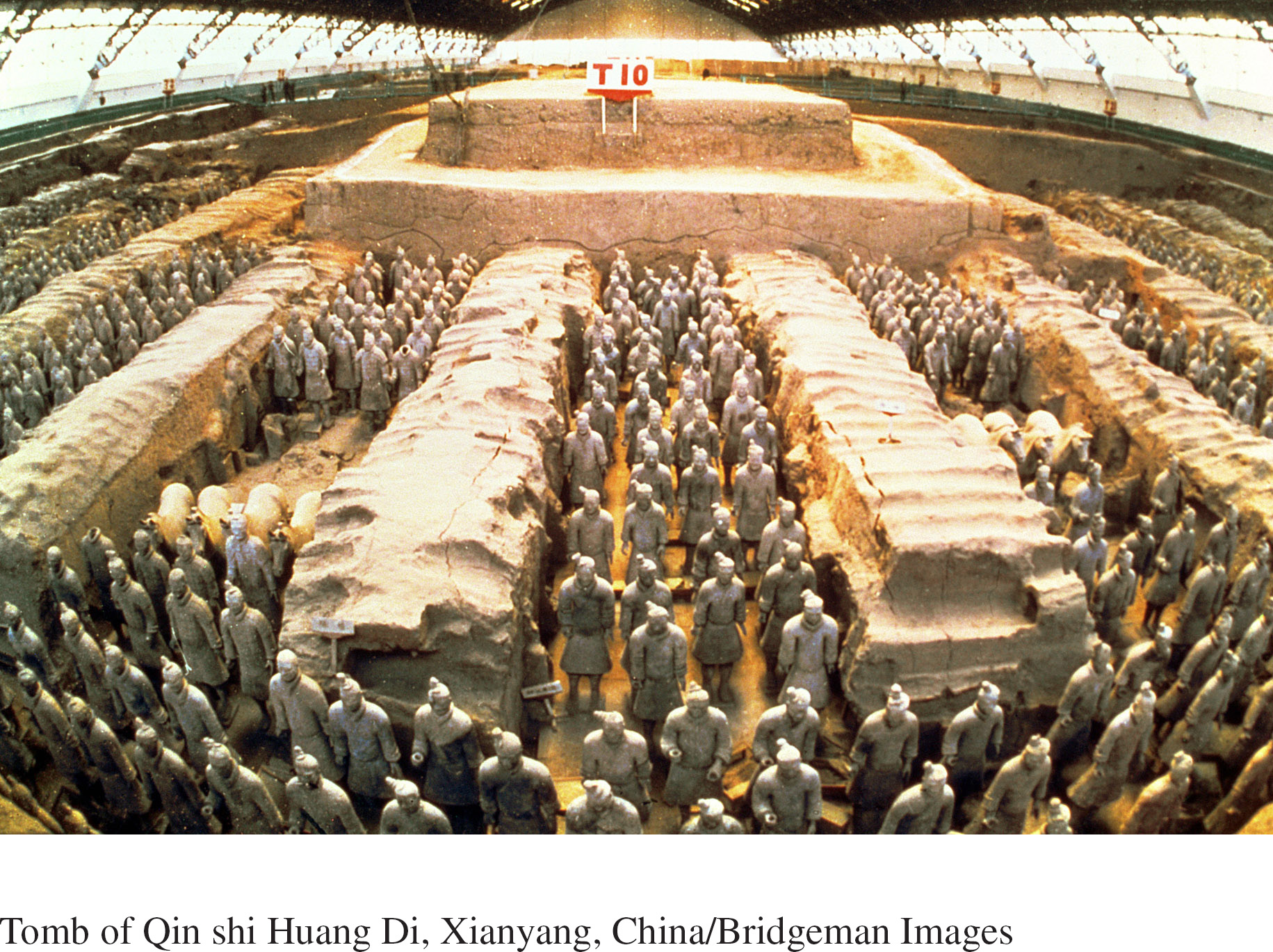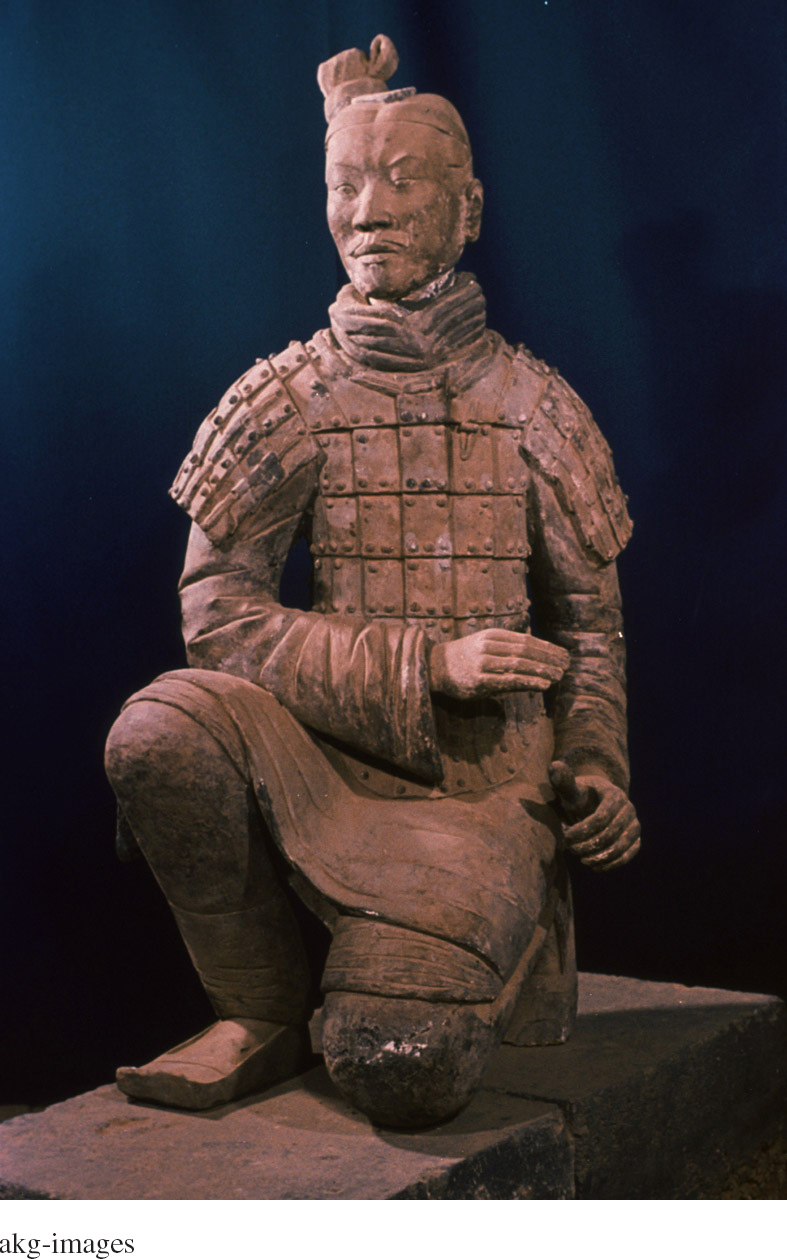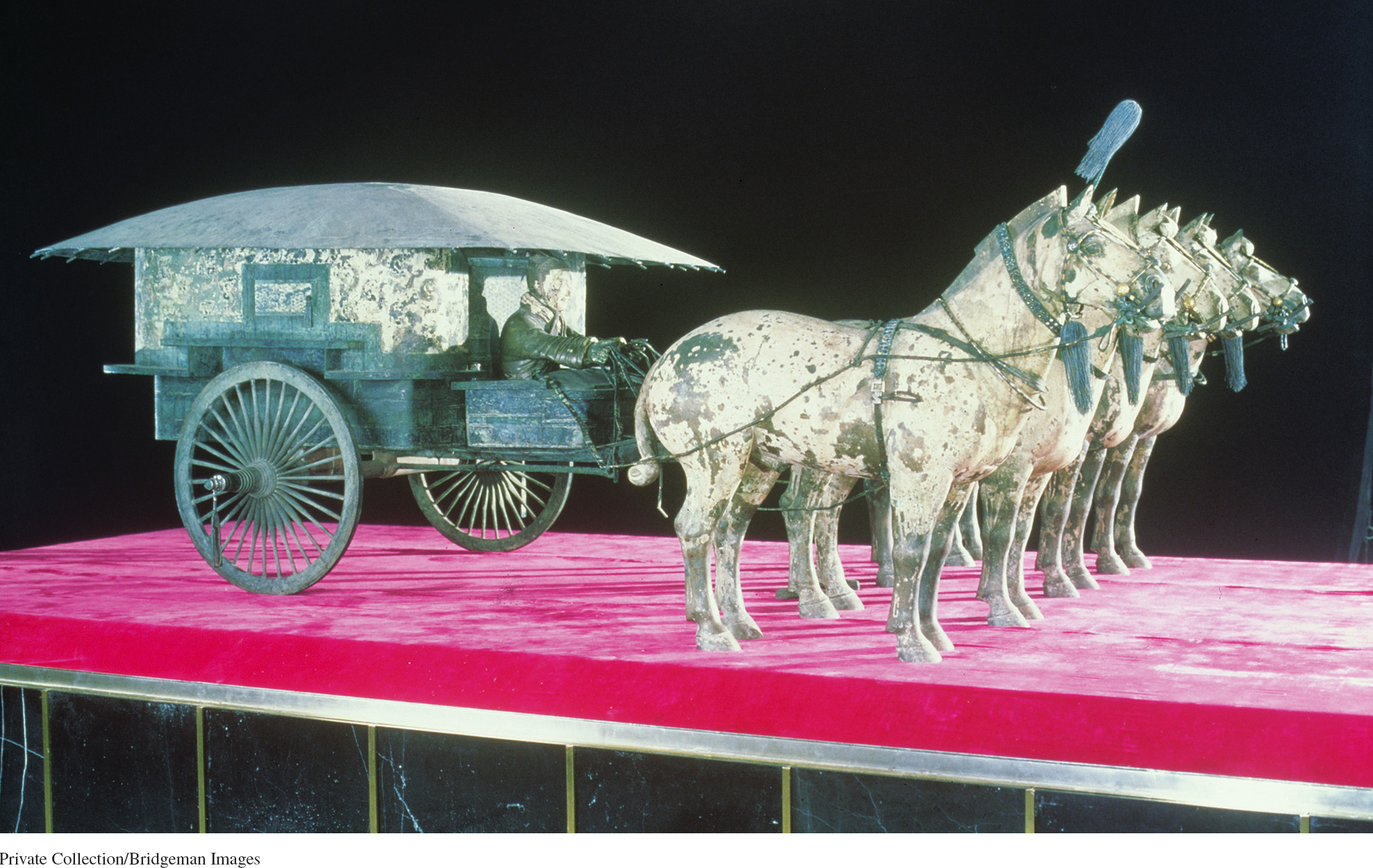Source 3.5
Qin Shihuangdi Funerary Complex
Surely the most stunning representation of political power during the second-
In early 1974, some Chinese peasants digging a well stumbled across a small corner of that complex, leading to what has become perhaps the most celebrated archeological discovery of the twentieth century. In subsequent and continuing excavations, archeologists have uncovered thousands of life-
This amazing discovery, however, was only a very small part of an immense tomb complex covering some fifty-
As soon as the First Emperor became king of Qin, excavations and building had been started at Mount Li, while after he won the empire, more than 700,000 conscripts from all parts of the country worked there. They dug through three subterranean streams and poured molten copper for the outer coffin, and the tomb was filled with . . . palaces, pavilions, and offices as well as fine vessels, precious stones, and rarities. Artisans were ordered to fix up crossbows so that any thief breaking in would be shot. All the country’s streams, the Yellow River and the Yangtze were reproduced in quicksilver [mercury] and by some mechanical means made to flow into a miniature ocean. The heavenly constellations were above and the regions of the earth below.2
Buried with the First Emperor were many of the workers who had died or were killed during construction, as well as sacrificed aristocrats and concubines.
This massive project was no mere monument to a deceased ruler. In a culture that believed the living and the dead formed a single community, Qin Shihuangdi’s tomb complex was a parallel society, complete with walls, palaces, cemeteries, demons, spirits, soldiers, administrators, entertainers, calendars, texts, divination records, and the luxurious objects appropriate to royalty. The tomb mound itself was like a mountain, a geographic feature that in Chinese thinking was home to gods, spirits, and immortals. From this mound, Qin Shihuangdi would rule forever over his vast domain, although invisible to the living.
Click to see a video (about three minutes) produced by UNESCO that provides a useful overview of the site. The video offers a sense of the size and scale of the site and includes a panoramic shot of the burial mound and close-
Questions to consider as you examine the sources:
- How does the fact that this funerary complex was largely invisible to the general public affect your understanding of its function? How might ordinary Chinese have viewed the construction of this complex even before it was completed?
- To what extent is the conception of political authority reflected in this funerary complex in keeping with the ideas of Han Fei in Source 3.4? How might it challenge those ideas?
- How do you understand the religious or cosmic dimension of Chinese political thinking as reflected in this tomb complex?
Source 3.5A
Qin Shihuangdi Funerary Complex

Source 3.5B
Archer

Source 3.5C
Bronze Horse-

Notes
- Quoted in Audrey Ronning Topping, “China’s Incredible Find,” National Geographic, April 1978, 448.
- Jane Portal, Terra Cotta Warriors: Guardians of China’s First Emperor (Washington DC: National Geographic Society, 2008), 11.